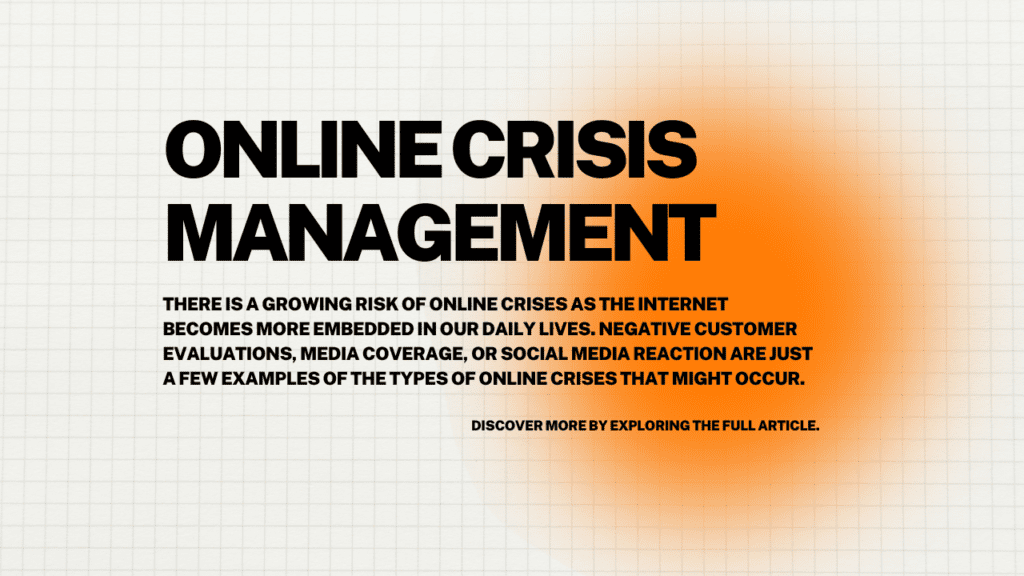There is a growing risk of online crises as the internet becomes more embedded in our daily lives. Negative customer evaluations, media coverage, or social media reaction are just a few examples of the types of online crises that might occur. Crisis management in the digital realm involves preventing, resolving, and recovering from such situations. All the specifics of handling a crisis in the digital realm will be covered here.
 Identify the Crisis
Identify the Crisis
Finding out what the problem is is the first step in handling a crisis in the digital realm. In order to catch any unfavorable feedback, it’s crucial to keep an eye on several web resources including social media, review sites, and the news. You can accomplish this by keeping a watch on review sites, setting up Google Alerts for whenever your brand is mentioned online, and checking in on social media often. It is crucial to assess the depth and breadth of a crisis after it has been recognized.
 Develop a Plan
Develop a Plan
It is important to formulate a strategy for handling a crisis once it has been recognized. A reaction strategy and a means of communicating with the public should be part of the plan. The strategy for responding to a crisis should detail the actions that will be taken. Taking legal action, addressing customer complaints, or eliminating harmful content are all options. Stakeholders, including as consumers, employees, and shareholders, should all be accounted for in the crisis communication plan.

 Respond Quickly
Respond Quickly
Management of an internet crisis requires immediate action. The problem can be defused if action is taken quickly. Within 24 hours of identifying a crisis, a reaction should be made. Genuineness, sympathy, and openness are all necessary qualities in a reply. It needs to recognize the problem and propose a way to fix it or at least start working on a solution.
 Communicate Effectively
Communicate Effectively
Management of an online crisis relies heavily on effective communication. It’s important to keep everyone in the loop on the status of the situation and the measures being taken to fix it. This may be accomplished through means of online posts, email bulletins, or traditional media such as newspapers or magazines. Constant openness and honesty in conversation is highly valued. As a result, the brand’s reputation can be salvaged and trust with its constituents can be bolstered.
 Monitor and Evaluate
Monitor and Evaluate
Monitoring and assessing the crisis’s aftermath is crucial. For this purpose, it is possible to keep an eye out for additional bad feedback by checking review and social media platforms. The efficacy of the reaction and the communication strategies should also be assessed. This can be useful for planning how to handle future crises better.
In conclusion, crisis management in the digital era is an essential function for any company. Understanding the nature of the problem, formulating a response, acting swiftly, maintaining open lines of communication, and keeping tabs on its aftermath are all vital. With these measures in place, companies may lessen the blow of an online crisis and safeguard their image.

